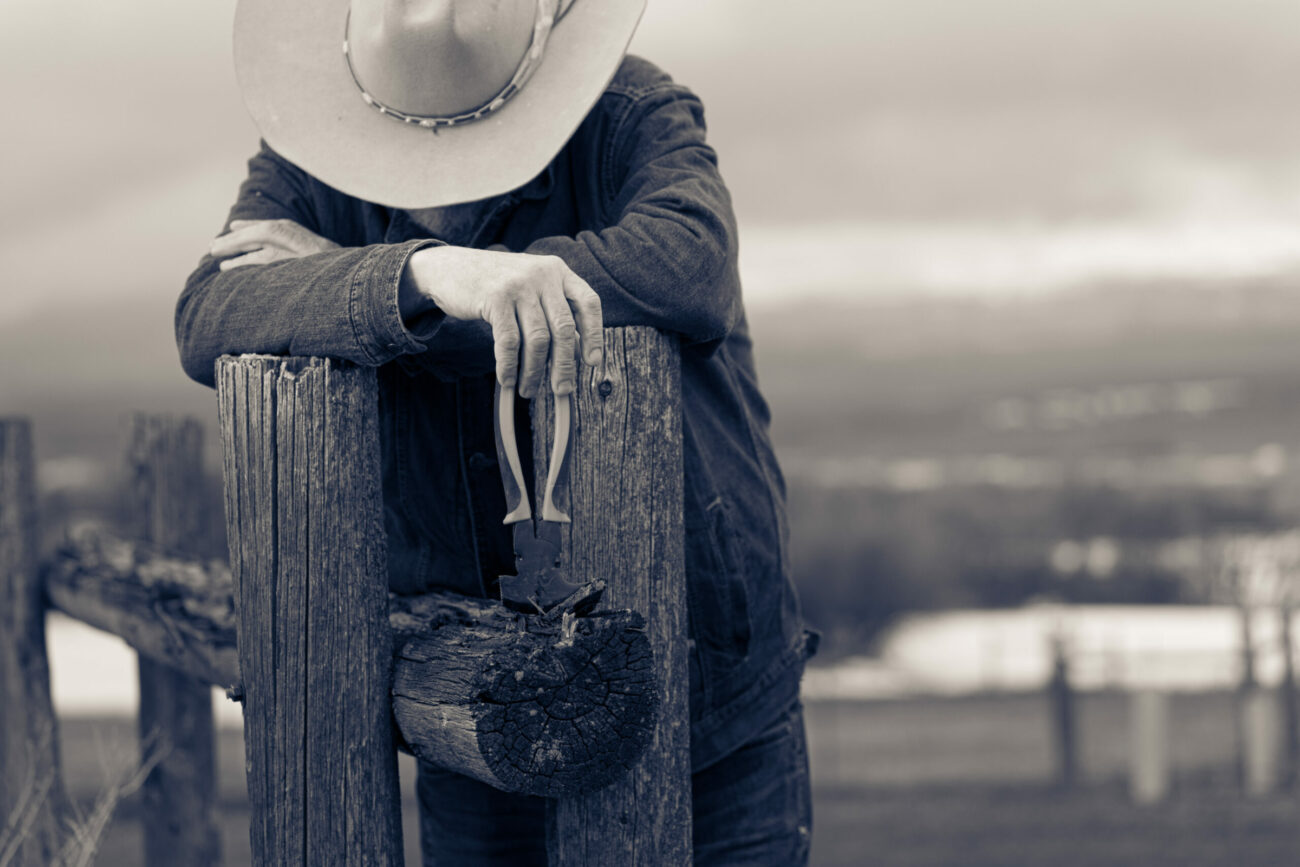Bringing Back Hemp
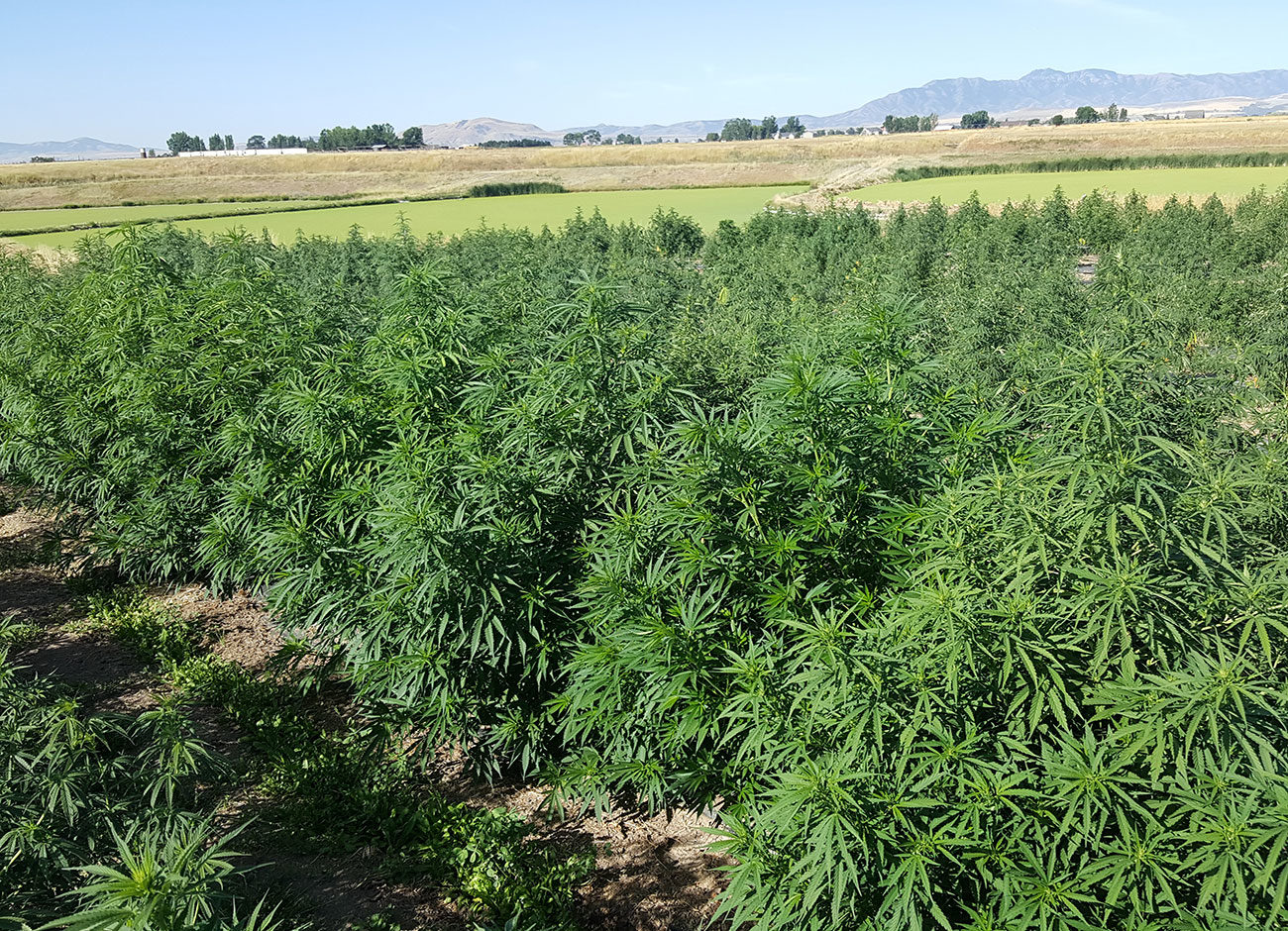
Growing quality hemp for medical CBD oil is blatantly sexist.
If you want your crop to prosper, production requires that only female plants are allowed in the field. Even one clandestine male plant with its copious pollen can make the flowers go to seed and render the crop worthless. Even a male plant a few hundred yards away can ruin the crop with the aid of windblown pollen.
Why would anyone attempt to grow such a finicky crop? Though the profit graphs sometimes look like the peak pandemic stock market fluctuation; it still is a potentially high-profit crop. Between July 2019 and January 2020, the price dropped from $20 to $5 a pound. Hemp has about the same yield per acre as wheat and alfalfa, so even $5 a pound makes it considerably more valuable compared to wheat at $.10 a pound or alfalfa’s $.05 a pound.
For working definitions, cannabis is most associated with its intoxication characteristics derived from the compound THC. Hemp contains less than 0.3 percent THC. The plants look the same and they are separated by only one gene. This is similar to sweet corn which is visually indistinguishable from field corn until you taste it. Cannabis and hemp look the same until you consume or analyze them.
What hemp lacks in THC it makes up for in CBD. It has only been a few decades since cannabis growers started looking for strains with CBD rather than selecting for the increased potency of THC. Over the last decade you have probably heard more about CBD than THC. Cannabis has been controversial for its legality and intoxicating property. Hemp-based CBD oil is controversial for its medicinal properties. You can legally purchase CBD infused oils, creams, drinks, dog treats, and just about anything you would care to ingest or put on your skin.
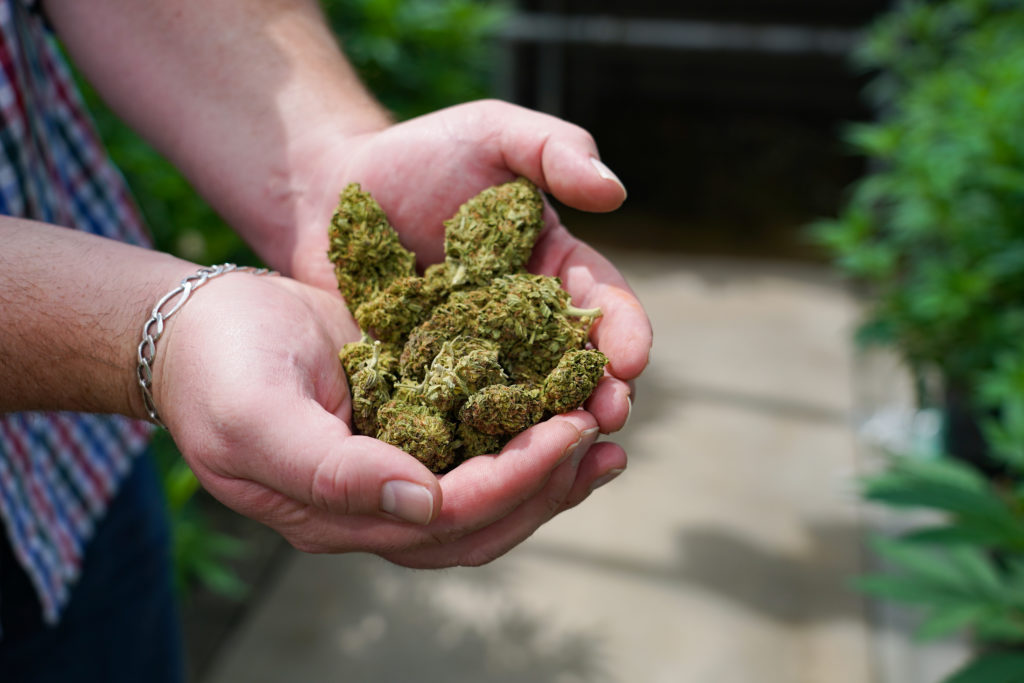
Andrew Burris, owner of Sunshine Family Hemp, holds hemp flowers. Photo by Dennis Hinkamp.
In this age of news silos and free information you could easily believe that CBD oil is the cure for everything. Additionally, hemp fiber can be woven into anything from insulation to your favorite tie-dye Nuevo hippie clothing. The panacea aspect of CBD often detracts from the proven medicinal properties. It has been shown effective at reducing epileptic seizures. It is the parents and friends of epileptic sufferers who successfully wore down the resistance of state legislatures who steadfastly wanted to ban anything related to cannabis plants. In Utah it was referred to as Charlee’s law, named for a young girl who died in 2014 while on a waiting list for the hemp-based botanical medicine.
This swift wind of change in legality has allowed researchers such as Utah State University’s Bruce Bugbee to accept research funding and begin laboratory research.
This is a bit of a detour for Bugbee. He has spent most of his career conducting NASA-funded research on growing food in space. He is probably best known for developing a dwarf wheat variety called Apogee that was grown on the International Space Station. Hemp research is not as dissimilar as it might sound. Bugbee’s laboratory specializes in studying plants in controlled environments. His first trials were in the same type of growth chambers used to grow Apogee.
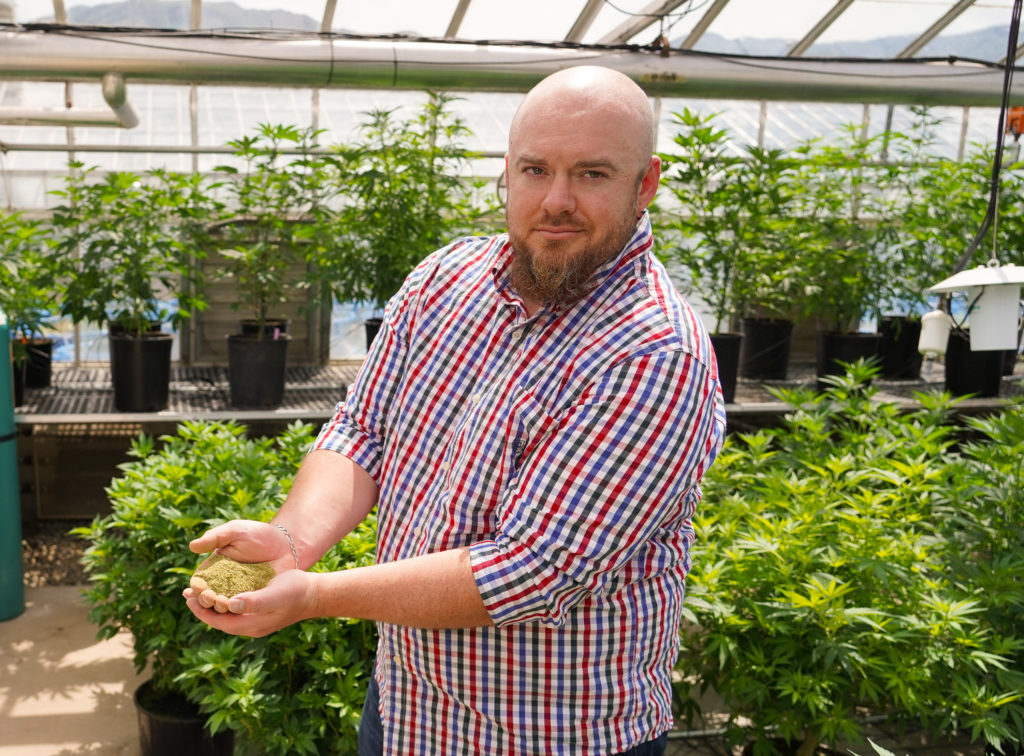
Grower Andrew Burris in the USU’s hemp greenhouse. Photo by Dennis Hinkamp.
Bugbee discovered that USU was conducting hemp research way back in the 1930s. Like many universities, USU was trying to grow the best strains of hemp to make rope for the war effort. There was no easy way to test the amount of THC or CBD so there is anecdotal evidence that researchers smoked it to make sure it didn’t get them high. Though there is a “wink wink” sound to this, it is probably true. This research was taking place in the context of the “Reefer Madness” (1936) scare films that were going around the country. Researchers didn’t want hemp farmers to get in trouble with the law.
In addition to protecting growers, the university’s mission has always been to supply agricultural producers with research-based tools and information. In the 1990s, Utah State University Extension was gearing up for the next big thing in Southern Utah agriculture. Extension sent faculty to South Africa to learn the craft. A marketing office opened in St. George. There was a tagline floated around. Ostriches were to be the “other red meat.” That didn’t turn out so well. One might look at hemp production with similar skepticism as to whether hemp production is the next big thing.
In early February 2020 USU Extension sponsored a hemp grower’s workshop that sold out its 300-seat capacity and had 50 potential growers waiting outside should anyone leave early. So clearly there is a demand for reliable information on the subject.
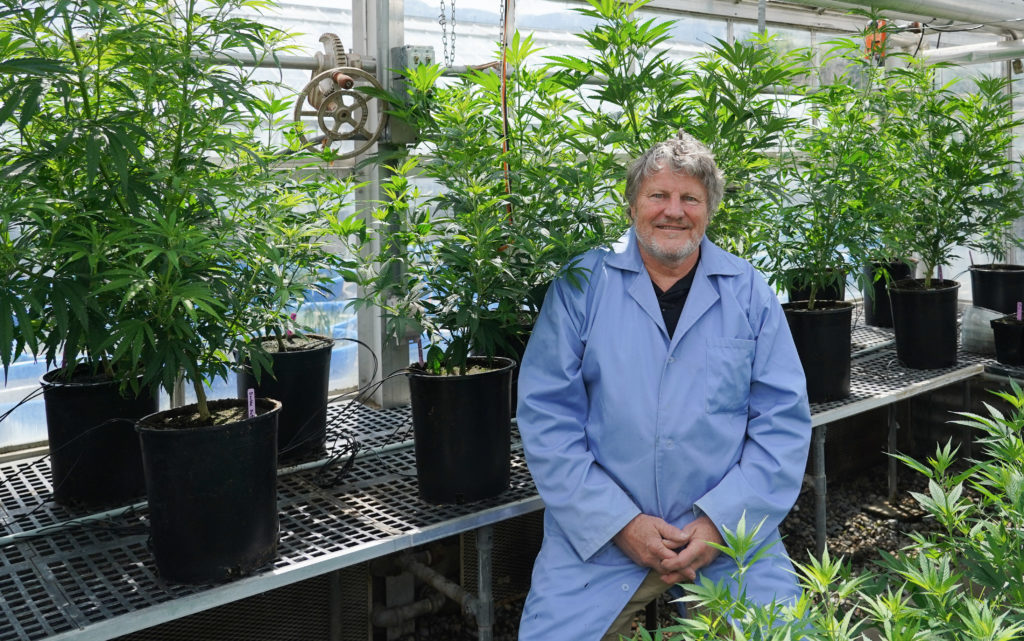
Bruce Bugbee may best be known for developing Apolgee, a dwarf wheat strain grown on the International Space Station. His latest research focuses on growing hemp. Photo by Dennis Hinkamp.
Hemp growers face some of the basic questions of economics and science associated with any crop. Do you plant seeds or clones? It takes an astute observer to pick out the male plants before they become a problem. Though seeds are much less expensive they are riskier because of the sex issues. As the market evolves, hemp seed growers market their product based on their success at delivering female-only seeds. The clones, like tomatoes starts, are more expensive, but more uniform and easier to grow.
From an agricultural economist’s point of view, hemp prices are highly volatile and compete in a thin market. There are few buyers, so they can control the price. Extension agricultural economist Ryan Larsen refers to this “monopsony” power. This means growers may need to form co-ops to pool their strength. Additionally, bankers are averse to risk and hemp growing is extremely risky. Some studies confirm a 90 percent failure rate in the first year. Growing costs can be $10,000 to $25,000 per acre. So if you are a new grower going to a bank for a loan, you better have a convincing plan in hand.
Bugbee says though it may be decades away, there is also the specter of lab-grown cannabinoids from yeast or bacteria in the lab rather than rely on field crops. This probably won’t replace fiber production, but it could replace CBD oil; the most valuable part of the crop.
That 90 percent failure rate sounds about right according to Cache Valley grower Andrew Burris. “I know 20 growers here and in Box Elder County and only two of us got a crop to market last year. Most others gave up and let it die in the field.”
Like any crop, success depends on mastering the variables. Hemp and cannabis have been grown for centuries in mostly uncontrolled environments or highly controlled illegal environments. The current generation of hemp growers are trying to do something new; maximize just the CBD oil aspect. Burris attributes his early success to rigorous vetting of all the players in the supply chain.
“We harvested 10,000 plants of the 11,500 we planted on five acres.” he says. “We were successful because we did our due diligence and got good seeds and genetics. We had less than 20 non female plants found in the those 11,500, we planted.”
The seeds were started in the greenhouse and transplanted in the field at about eight weeks. The strains, which tend to have lighthearted topical name origins, they selected were Cherry Blossom, Trump, and Stormy Daniels. Burris chose drip irrigation rather than flooding or overhead sprinklers and harvested the crop more like tobacco; cutting the plant off at ground level then hanging the plants upside down in a barn to dry, he says.
A lot of the old boys like to come over and ask, “How are the drug dealers today?” – Andrew Burris
The next step is shucking to remove the leaves and flowers. It is one tough plant, he recalls. We tried a chain saw and brush trimmer, but neither seemed to work. We ended up cutting them all down by hand with a set of loppers. That took two people two weeks to finish.
Unlike other seed crops, hemp yields liters not barrels of oil. Burris says he had a successful yield of 15 liters but laments there is a lot of biomass left after the harvest. “There are many potential uses for the rest of the plant, but none of them are profitable yet. Outside a few niche markets, the fiber has little value. Hemp is high in protein but is not yet approved as a livestock feed supplement. Most farmers just burn the stalks.”
Even with his personal success, he says he’s probably not going to grow another outdoor crop in Cache Valley because the growing season is too short. Still, Burris and his family are bullish on hemp; they are transitioning to selling CBD products and getting the hemp from other growers. Burris is now the manager and owner of Sunshine Family Hemp.
“It has been an adventure watching the plants grow and getting all the questions,” he says. “A lot of the old boys like to come over and ask, ‘How are the drug dealers today?’”





